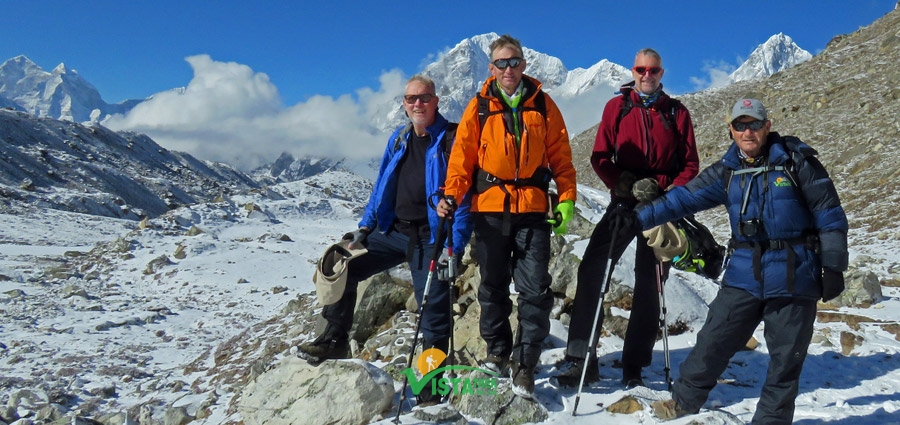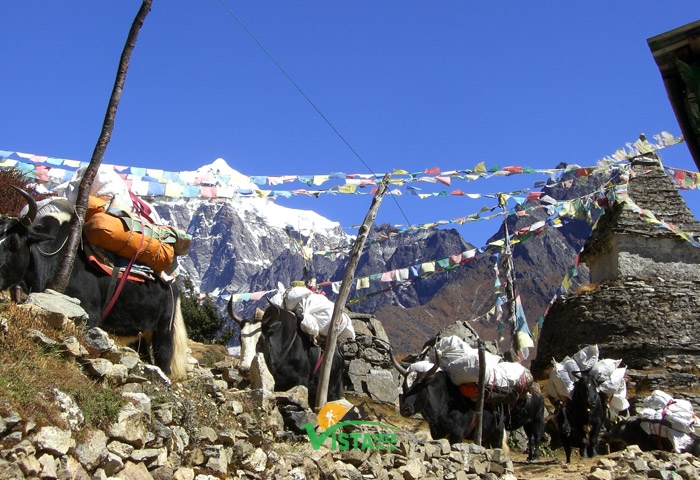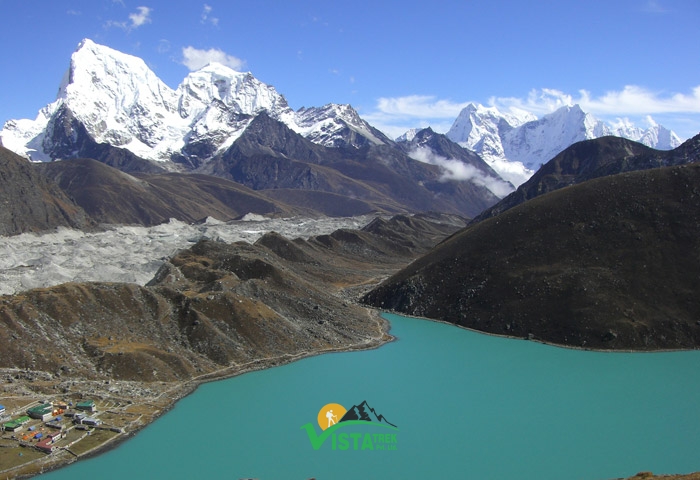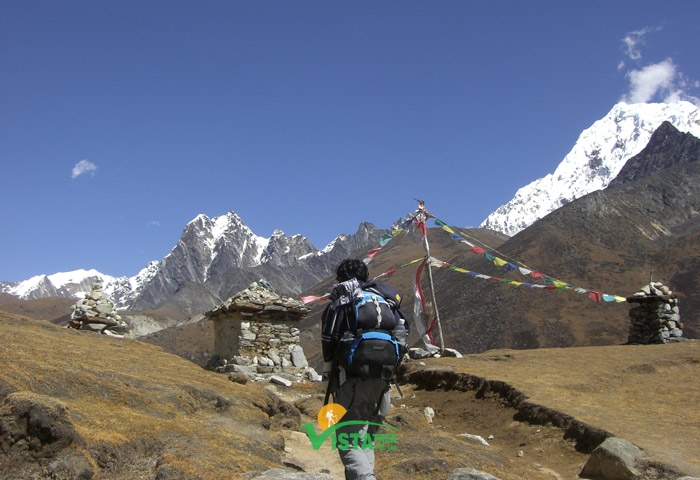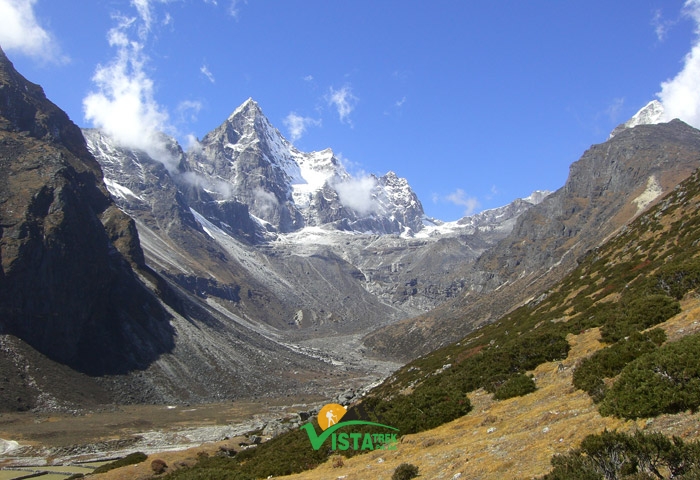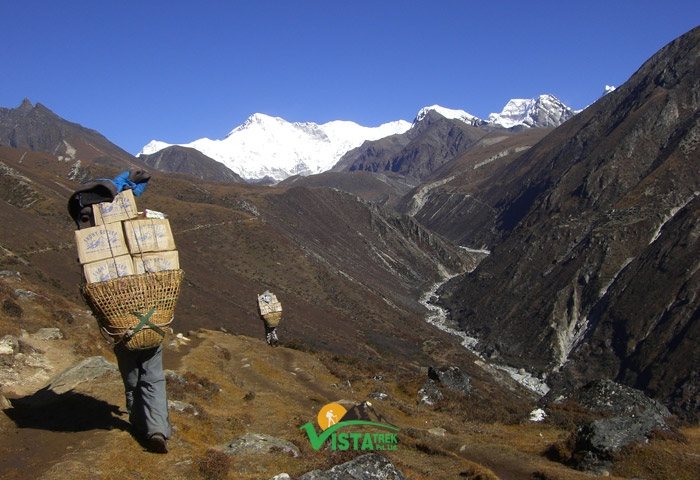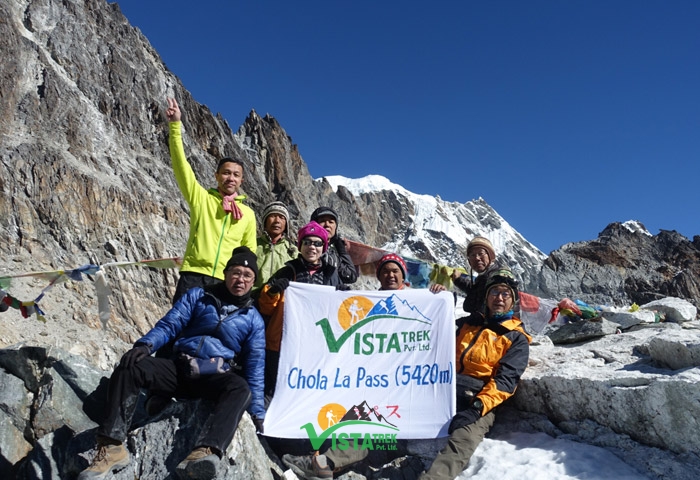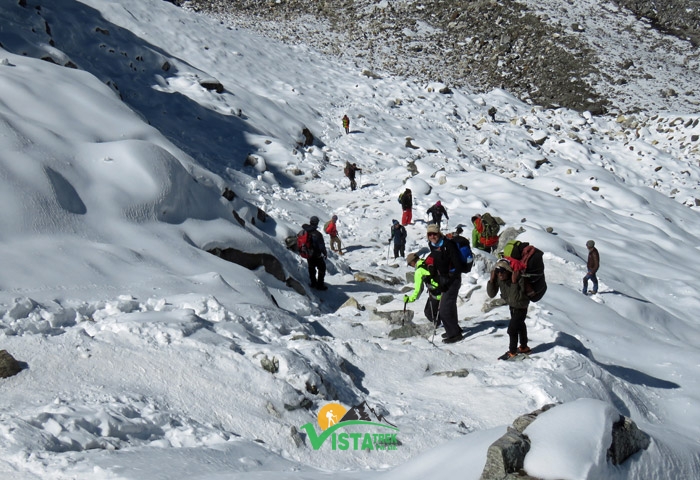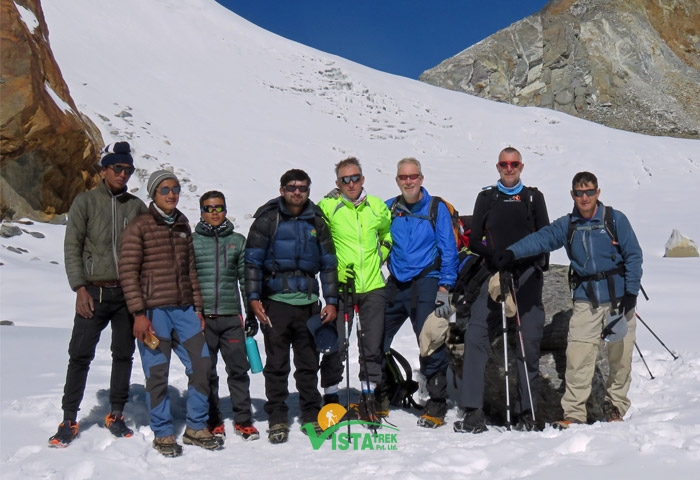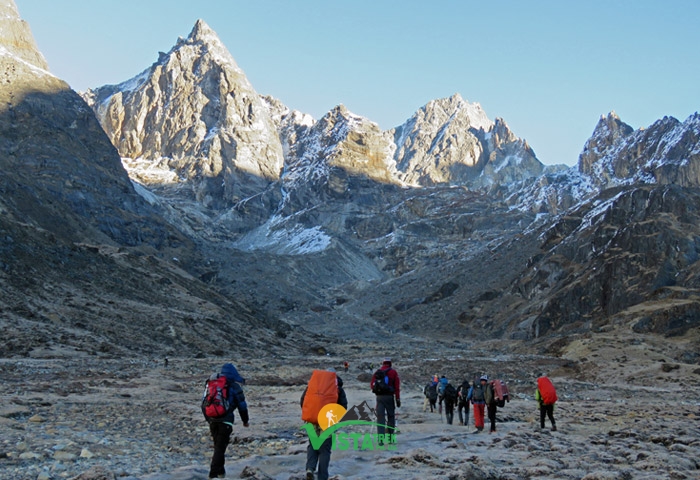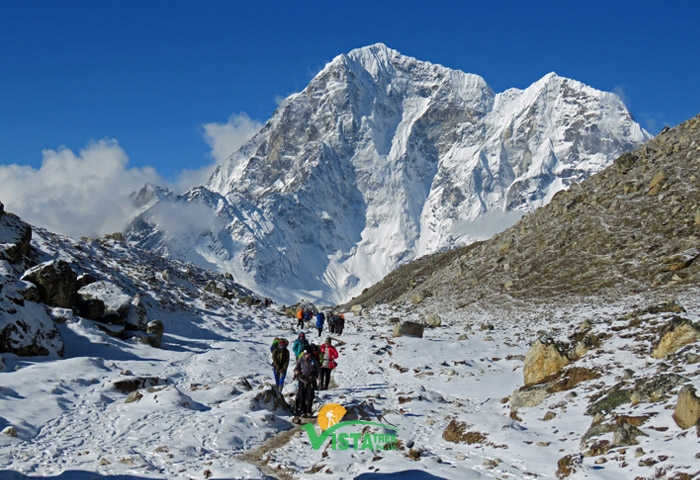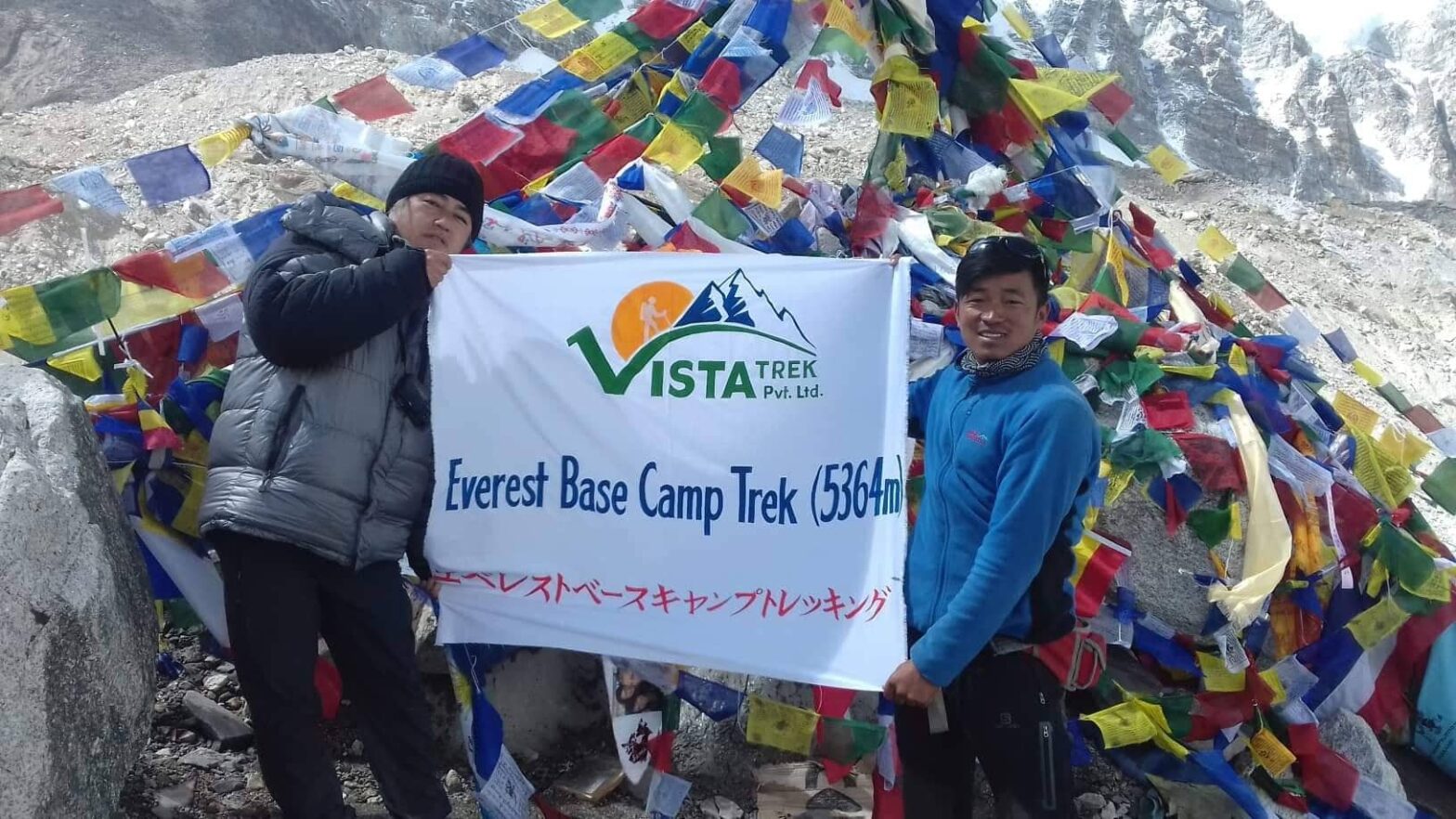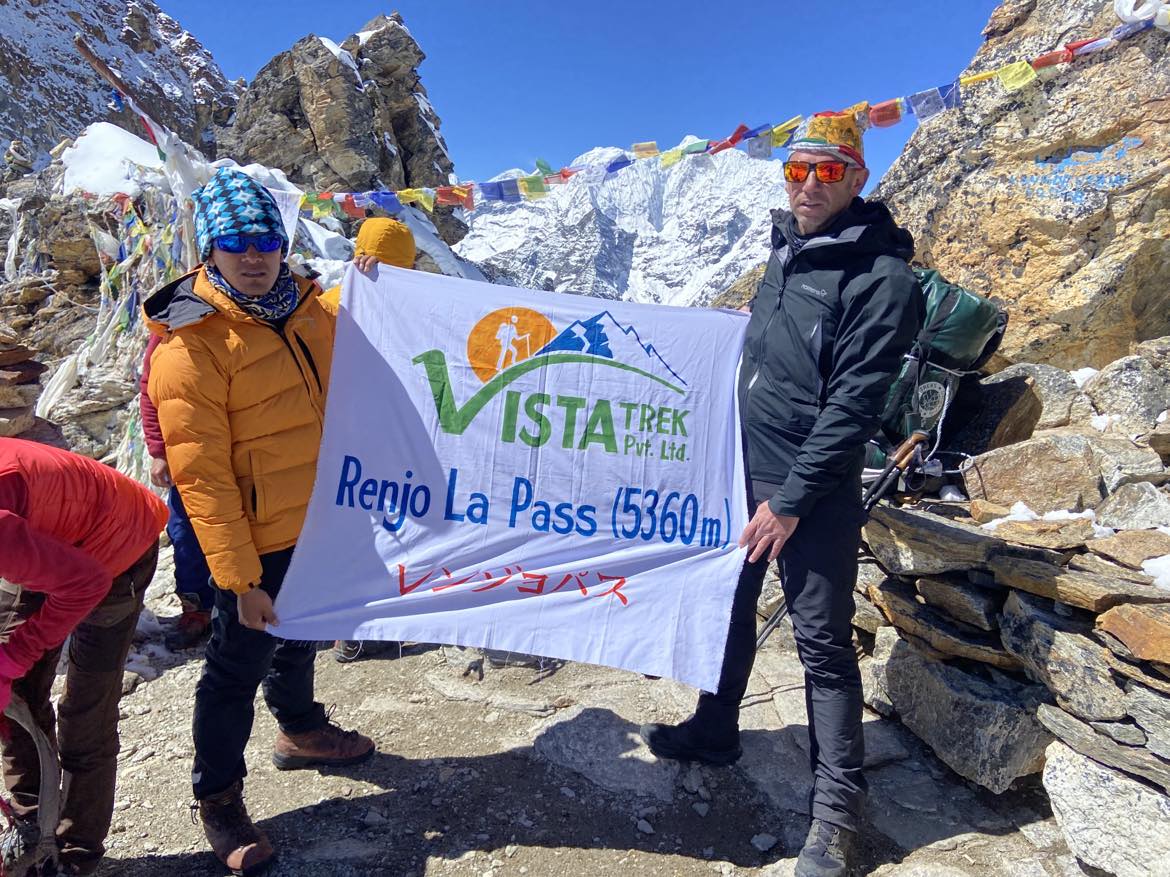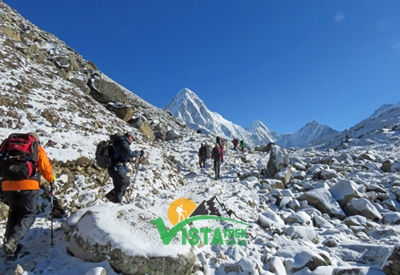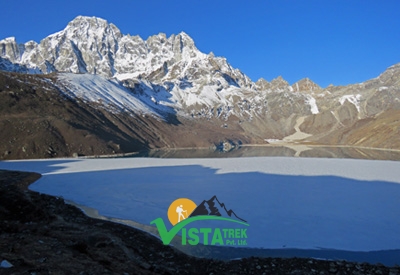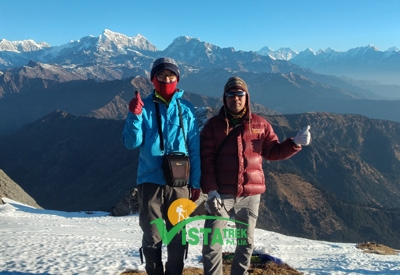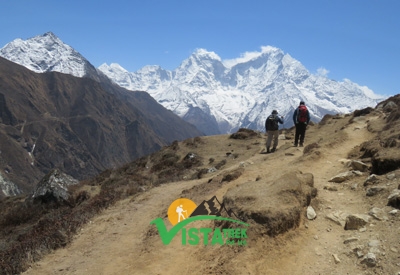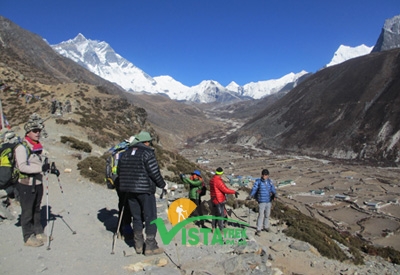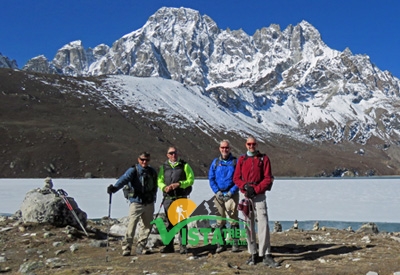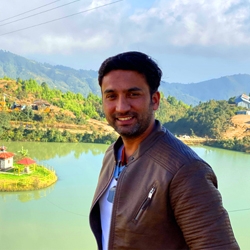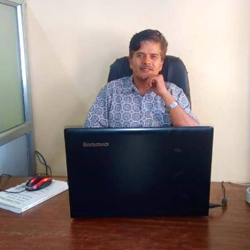Trip Facts
- Duration 20 Days
- Start FromKathmandu
- Group Size1-10 Pax
- End FromKathmandu
- Trip GradeModerate to Strenuous
- Max Height 5550 m
- AccommodationTea House
Best Season
Sept – Nov, March to May
Trip Highlights
- High altitude trek to Everest Base Camp (5,359 metres) and Kalapathar (5,575 metres)
- Traditional route to Everest Base Camp through, Jiri, Bhandar, Junbesi Villages.
- Offers magnificent views of more than 40 peaks including three of the world’s highest (those above 8000 metres): Mt. Everest, Mt. Lohtse and Mt. Makalu
- Takes to Khumbu Glacier (14 km long and 420 metres deep).
- Observe agricultural life of Sherpa People in Lower Khumbu area.
Trip Overview
Jiri to Everest Base Camp Trek is the classic way to Everest base camp. The trekking route from Jiri to Kalapathhar is a longer and more varied trek to the Everest Base Camp, which is, in fact, the old Mt. Everest expedition route used on the first successful ascent. This trek passes through spectacular villages with exotic monasteries in Junbesi (2675 mt.) and to Khartung which offers the first view of Everest and host of other peaks like Thamserku (6608 mt.), Kantega (6779 mt.), Kusum Kanguru (6367 mt.) and Mera Peak (6654 mt.). Further to Traksindo Pass (3071 mt.) and Ringmo.
This is a classic trekking route which is a variation of the Everest trail to avoid the busier standard route and to see Sherpa villages that are less crowded. The trek emerges high up in the Khumbu valley and follows the trail to Everest Base Camp along with superb views of Everest, Lhotse, Nuptse, and Makalu.
Trip Itinerary
- Upon arrival at Tribhuwan Intl Airport in Kathmandu, a representative from Vista Trek waiting, well in time, to receive you shall welcome you to this land of towering Himalayas. Once reaching your hotel in a car from the airport, all you need to do is check in and enjoy the refreshment served.
- We then visit the Vista Trek office for discussion on trekking, introduction to the guide and porter and settlement of dues if any. Since you will still have some time left for a walk around Thamel, you can do so if you please.
- Start our long trip to Everest Base Camp by express bus to Jiri.
- Scenic drive that goes through several beautiful villages, mountain hills , Rivers, Waterfalls and Terrace fields . Set up as agricultural development centre by the Swiss Government Aid in 1938, Jiri village is one of the most beautiful village we pass before arriving in Bhandara.
- Spend the night in the guest house in Bhandar
- After breakfast, start our first day of walking. Going down hill to reach Likhu Khola and cross the bridge.Following windy path leading us to Kinja Village where we stop for our Lunch.
- After lunch ,continue the trek climbing up hills . The trail goes through numerous farm houses and terrace fields , small settlements with colorful houses to arrive in Sete Village.
- Spend the night in the guest house in Sete.
- After breakfast we start our trek.
- Gradual climb from the beginning , passing throug some small teahouse, beautiful rhododendron forest to reach the Lamjura Pass. This is the highest point between Jiri and Namche Bazaar, normally windy but offer great view of surrounding green mountains and valleys .
- After the pass, continue our walk through green forest to arrive small settlements of Takto and then to Junbesi to end our long trip for today.
- Spend the night in the guest house in Junbesi.
- After breakfast, we start our trek crossing the wooden bridge over Junbesi Khola and arrive at the trail junction. We follow the left-hand trail which goes to Khumbu.
- Our trails turns north and descend through Salung. On a clear day we can see Mt. Everest towards north east. After following hidden route in the dense forest, streams and huts, arrive in Nunthala to finish our trek for today .
- Spend the night in the guest house in Nunthala.
- After breakfast we start our trek descending from Nunthala to Dudhkoshi River.
- Walking along Dudhkoshi River before crossing the Bridge, then the a trail leads through terraced fields and yards of houses, forest to reach the village of Jubing inhabited by ethnic group of Rai . From Jubing, climb upto the ridge, and continues to the village of Khari Khola to end our trek for today.
- Spend the night in the guest house in Kharikhola.
- After breakfast ,we start our trek .
- Today we first assend to Bupsa danda through nice green forest and asscend to Bhumsing village. Spending some time here, continue our trek to north side of the valley and arrive in Puyan Village. Walking through forest, be aware of wild animals,not a dangerous but have an opportunity to take picture.
- Spend the night in the guest house in Puyan.
- After breakfast we start our trek through long winding trail with few small ups and downs to Surke. Then We climb north to Chaurikharka, a large scattered village with monastery and high school. This village is very fertile for barley, wheat and green vegetable. Our trail joins from Lukla towards Phakding, making the path quite busy with more trekkers, porters and pack animals .
- The trail is relatively comfortable and passes through four Sherpa villages. Houses with stone walls and colourful roofs, huge prayer stones with mantras from the teachings of Buddha carved in them, monasteries with busy budding Lamas, several mountains already in sight and rivers and waterfalls along the way to reach Phakding Village. .
- Spend the night in the guest house in Phakding.
- After breakfast, we walk for about 2 hours to Jorsalle Village for lunch. The route starts along the banks of Dudhkoshi River and crosses two suspension bridges before reaching Monjo Village. A 20-minute descent towards the end, finally, leads to Jorsalle Village, the entrance to the Sagarmatha National Park as well as the last village until Namche Bazaar.
- After lunch, we walk for around 3 hours to Namche Bazaar. With the raging Dudhkoshi River mostly to the left for about half an hour before crossing a suspension bridge, the trail in its final 2 hours ascends through a pine forest. In reaching Namche, the administrative headquarter of the Khumbu Region, the ascent often demands a little extra even from seasoned legs.
- Spend the night in a hotel in Namche.
- It’s time for a trip to Sagarmatha National Park Museum after breakfast. Most people use their time at the Museum trying to gain some insight into the Everest Region – about the highest peaks, animals and vegetation that rule the region as well as the Sherpa culture and experiences of many trekkers and climbers.
- We then leave the Museum and walk for about an hour to the Everest View Hotel for lunch. Constructed on a site in an altitude higher than any other on earth and ideally positioned, the hotel presents all its guests with ample individual space to appreciate the grandeur – a typical Sherpa village in the Khumjung Valley below to the North-West; on a hilltop above the village, the Khumjung Monastery, where a preserved skull which the locals believe to be that of a Yeti can be witnessed upon request; Mt Khumbila, a massive rocky elevation worshiped as a deity by the locals and, thereby, a restricted peak for climbing, right above the valley; and to the North, captivating views of the Himalayas, including Mt Everest, Mt Lhotse and the beautiful Ama Dablem.
- After climbing down to Namche Bazaar in the afternoon, a walk around the Bazaar is a preferred involvement to some and indulgence to others.
- Spend the night in the hotel.
- We start trek after breakfast and stop at Phunki Thanga for lunch after about 3 hours’ walk. The comfort of the trail up to Kyangzuma Village ends with the moderately challenging descent to Thanga. In Thanga, a pretty small settlement with three constructions at most, the trek stops for lunch in a tea house. While the food is prepared, many people find waiting an experience of its own – the rumbling of Dudkhoshi River from the deep gorge below reaching the eardrums from the right, the eyes exploring the presence of the pine and rhododendron trees densely populated in the area, a gentle breeze caressing the hair while waiting for lunch hungry after several hours of walk.
- After lunch, we walk for around 3 hours to Tyangboche. From here on, the trail ascends sharply mostly through forests filled with pine and rhododendron trees all the way to Tyangboche. A spectacular view of the beautiful Mt Amadablam meets the eyes as soon as they enter the village. The next to capture the attention is the biggest monastery in the Khumbu Region, the Tyanboche Monastry. The settlement presents a typical picture of a village in the laps of the Himalayas – houses made of stones in a cluster separated by narrow alleyways, a monastery and/or a temple highlighting the beliefs of the people, people going about displaying a simple way of life, a forest nearby, a river flowing pretty close and between two the snow caped Himalayas.
- Spend the night in a hotel in Tyangboche.
- After breakfast, we walk for about 3 hours to Pangboche Village for lunch. With a downhill to the village of Diboche before a long gradual ascent, through a rhododendron forest, across a bridge, the trail finally brings its travelers to Pangboche Village. With narrow footpaths carved along the edges of hilltops, parts of the route demand alertness while being constantly drawn by the breathtaking views on offer in front, now that Mt Ama Dablam gets closer and closer with every step forward.
- After lunch in Pangboche, we start walking again for about 3 hours to Dingboche. With the magnificent Mt Ama Dablam to the right all the time, this course triggers some contemplation into the phenomena in the immediate environment along the way – yaks with loads on their backs walking in a file, a tahr jumping care freely on slopes only perhaps the most daring would think of giving a shot at and a male impeyan pheasant – the national bird of Nepal – dancing with a hope to impressing a female nearby who till now seems to simply be turning a blind eye … a smile and a gentle shake of the head in sincere appreciation of the visually appealing yet intellectually challenging ways of things. Dingboche, with around forty households, is home to approximately two hundred locals.
- Spend the night in a hotel in Dingboche,
- After breakfast, we pack our lunch and go up a steep climb for around three hours to Nangkar Tshang at an altitude of 5,616 metres. From this vantage point, the view when facing Norht includes Mt Lothse and Mt Nuptse in the front, Lotse Shar and Peak 38 and Island Peak to the front-right, Mt Ama Dablum to the right, Mt Thamsherku, Mt Kantega and Taboche Peak to the back and Chola Tse Peak and Lobuche Peak to the left.
- After spending some time in Nangkar Tshang, we come back to Dingboche and spend the night here.
- After breakfast, we walk for about 4 to 5 hours to Lobuche Village. A steep climb most of the way, the trail starts out of Dingboche, past a chorten, ascending to Dugla at the end of the terminal moraine of Khumbu Glacier … climbing steeply to Chukpo Lari past a line of memorials commemorating climbers who have lost their lives in Everest, and, finally, easing off for the last 20 minutes or so. Sensing the approaching destination, the legs, which have otherwise almost given up to the demands of the walk, gather all they’ve got with this newly found enthusiasm. After lunch, Lobuche, a tiny hamlet with a few teahouses, welcomes its visitors to either investigate the ridge on the opposite side of the Khumbu Glacier or watch the fascinating changes in colour the sunset brings on almost the top half of Mt Nuptse.
- Spend the night in a teahouse in this settlement.
- After breakfast, we walk for about 3 hours to Gorakshep. After a three-hour climb to Lobuche Pass on rocky paths and under windy conditions followed by a brief stop for a cup of tea, the trek stops at Gorakshep for accommodation arrangements and lunch.
- After lunch, we start walking again for 2 hours to Everest Base Camp. Walking on the lateral moraine of the Khumbu Glacier, audibly making cracking sounds, most manage to push forward up the grueling climb uphill purely on determination as the level of oxygen drops to around 50 % lower to that at the sea level. A stop on the way here for a short while … five of the world’s highest mountains crammed in a small area … fascinating! Ascending the side of the glacial moraine for a couple of more hours before landing on the moraine itself, the trail finally reaches the Everest Base Camp. Photographs, smiles, hugs … in sheer admiration of the endurance to the Base Camp of the highest mountain on earth.
- We walk back to Gorakshep and spend the night.
- We start early morning and walk for almost 2 hours to Kala Pathar. The almost 200-metre climb, taxing by now after several days on the trot, leads to the top of Kala Pathar. A 3600 view of the Khumbu Himalayan range – Mt Everest and Mt Lhotse in the front, Lingtren and Khumbutse Peaks to the front-left, Mt Pumori to the left, Numerous other peaks to the back-left, back and the back-right, Mt Taboche and Cholatse to the right, Mt Nuptse to the front-right.
- After lunch, we start walking to Pheriche. Through a large glacial valley with Cholatse (6,335 metres) and Tobuche Peak (6,495 metres) to the right and Pokalde (5,693 metres) and Nangkar Tshang (5,616 metres) to the left, from a different route from the end of Khumbu Glacier in Dugla, the descent puts on a smile on all faces despite the force of the cold wind hitting them constantly. Above the Tsola River, primarily a farming village growing potatoes and buckwheat as well as keeping yaks, Pheriche today provides accommodation and food to trekkers and climbers through its many lodges in place.
- Spend the night in Pheriche.
- After breakfast, we walk downhill to Tyangboche. After lunch here, we walk the rest to Namche Bazaar.
- Spend the night in a hotel in Namche.
- We leave Namche Bazaar after breakfast and stop at Phakding Village for lunch after about 4 hours.
- We walk the next 4 hours (approximately) to Lukla.
- Spend the night in a hotel in Lukla.
- We fly back to Kathmandu and reach the hotel in time for lunch. The afternoon is for shopping for some, for buying souvenirs for others and for doing whatever they please for still others. In the evening, however, please allow us the pleasure of your company during the fare-well dinner organized by Vista Trek.
- Spend the night in the hotel.
- If you have a morning flight, we leave for Tribhuwan Intl Airport early morning in a car arranged by the office.
- If your flight is in the late afternoon or evening, only your WILL shall dictate your involvement or indulgence as you may please before leaving for Tribhuwan Intl Airport in the vehicle.
Cost Includes
- Pick up and transfer by car from Airport-Hotel-Airport.
- 3 nights deluxe hotel accommodation in Kathmandu at good hotel.
- Breakfast, lunch and dinner during the trek.
- Local lodges accommodation during the trek.
- Government licensed guides, plus experienced porters ( including their food, salary, accommodation, equipment, medicine & insurance).
- All local transportation including flight tickets from Lukla.
- All necessary permits and entry fees.
- All government taxes.
- Necessary equipment (sleeping bags, down jackets, walking sticks etc. if needed).
- Our service charge.
Cost Excludes
- Meals in Kathmandu .
- International airfare.
- Nepal entry visa fee ($40).
- Your travel insurance (should include your medical and rescue).
- Any personal expenses.
- Any kind of hot & cold drinks (Alcohol and beverage.)
- Staff & driver tipping.
Trip Map
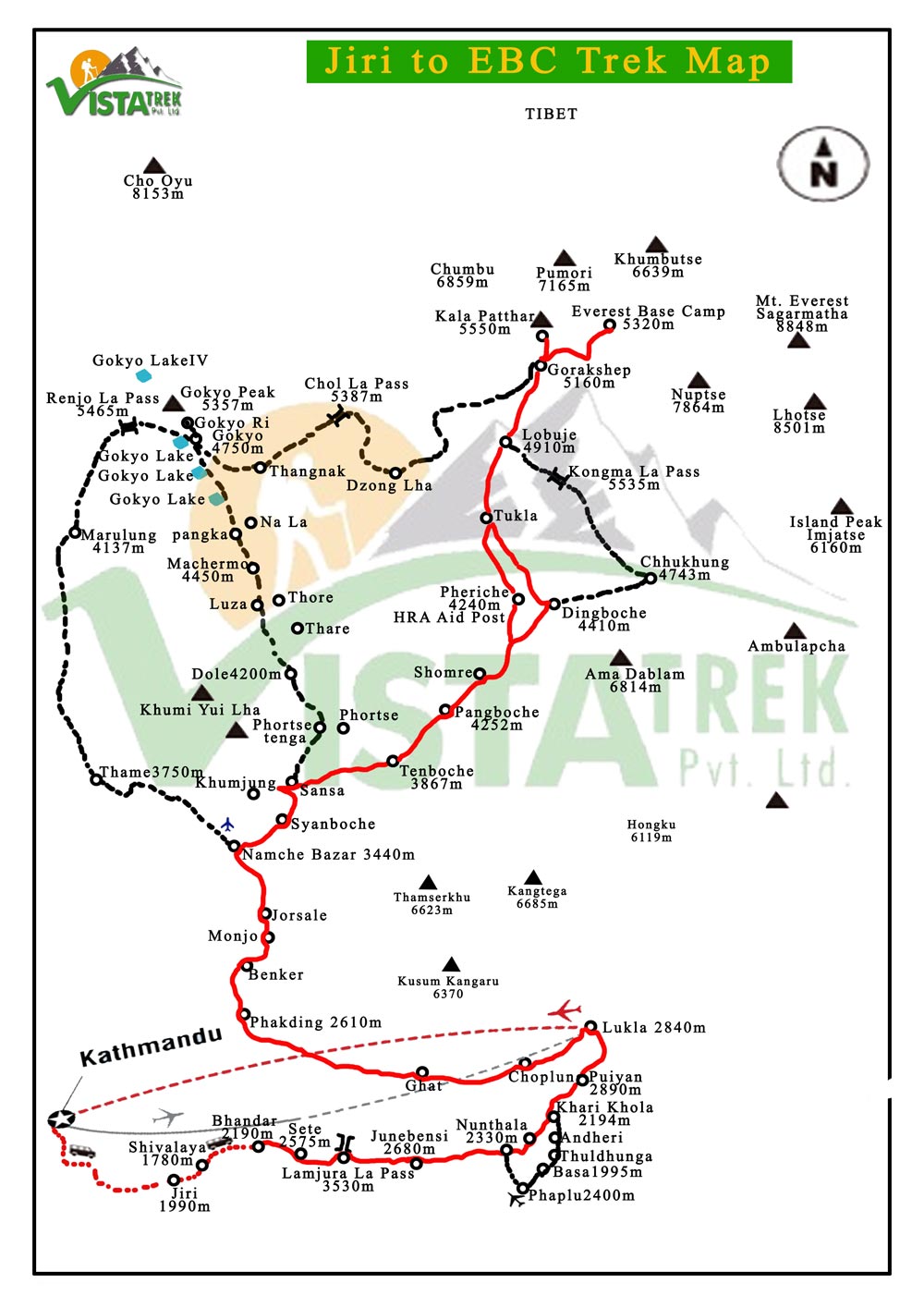
Useful Info
About Accommodation.
In Kathmandu, we will accommodate you at Hotel Sapana Garden, and at local lodges during the trek on twin sharing basis. Hotel in Kathmandu comes with private bathroom , however in mountain, toilet and shower will be on sharing basis. In the busy months, (October/November & April/ May) you may have to share the room with other traveler as some villages have limited number of local lodges .
About Meal You can enjoy typical Nepali food as well as continental , Italian, Indian and Tibetan. Dinner and breakfast serve at the tea house where we stay and lunch will be served on the way to next destination. In Kathmandu only breakfast is provided. If you are a vegetarian or vegan, no worries, Nepal is such a easy place to get several vegetarian options.
About Meal
We offer typical Nepali meal as well as continental, Tibeten and Indian meal at tea houses. The menu of tea houses include traditional Nepali Dal Bhat set which consists rice, lentil soup , pickle and vegetable curry. Other meals available are toast, boiled eggs, pancake, omelets, local bread, fried rice, Fried noodle (Chow mein), fried potato, noodle soup, momo (Nepali Dumpling), vegetarian curries, macaroni and pizza . You can even get meat item, however meat is not fresh and hygienic in the mountain, so We highly recommend to take vegetarian meal. For vegetarian or vegan, do not worry about it, Nepal is such an easy place for vegetarians.
About Staff:
A Guide and a porter will assist you from Kathmandu to Kathmandu. In a group with more than 8 clients, 2 guide will be provided. Porter will carry two person’s luggage and carries between 15 to 20 K.G.
About Equipments
Following Equipment list is recommended to bring for Everest Base Camp Trek
Down Sleeping Bag, Down Jacket, Long sleeved shirt, Jumper or fleecy jacket, T – shirts, Trekking shoes or boots, Comfy shoes for around the camp, thick and warm woolen socks, Light cotton socks , A day bag to carry your valuable, Sun hat, Woolen hat, Gloves, rain coat, Sun block, lip balm , Goggles or sunglasses, Long underwear, Thermal wear, Nylon windbreaker, Nylon wind pants, Water bottle, Sewing kit, Medical & first aid kit, Flash light, Batteries and bulbs, Swiss army knife, Towel and toiletries etc. Please kindly check our Equipment list for details.
About Temperature.
Temperatures vary as per the elevation and season in Everest. Spring (March to May) and Autumn (September to December) is quite warm below 3000m that you can walk with t-shirts and shorts during day. Above Namche, day time temperature is around 5-10 °C and night time temperature is below 0 °C. Everest Base Camp is cold through out a year and night time temperature can reach up to–25 °C in winter. There are no heating system inside the room in guest houses, therefore it is important to prepare warm clothes and sleeping bag for the trek.
Physical Fitness and experience
Jiri to Everest Base Camp Trek is a Challenging and high altituide trek which is fit for those who has the ability to walk 5-6 hours ups and downs in a day carrying own day bag. Some days are even longer with 7- 8 hours of walking, which demands more physical fitness.Therefore it is better to do some training prior to trek.We suggest you to start hiking or long walk at least once a week 10-12 weeks prior to trek. Carrying your day bag, you should walk for 5-6 hours ups and down to improve your strength. If you don’t have mountain or hills for hiking, running or doing some Cardio training at Gym also work.Past experience is helpful but no technical skill is needed. If you are taking medicine for heart, lung or for blood diseases, please kindly consult your doctor and inform to Vista Trek P. Ltd.
About Insurance
You have to obtain the travel insurance which should cover emergency evacuation and medical expenses. Some Insurance policy’s cover only up to 4000 meter, so please kindly confirm with the insurance company before your purchase it.
About Seasons
Spring (March to May) and Autumn (September to November) are the best months for Jiri to Everest Base Camp Trek. You can do it in winter (December to February )if you are used to in extreme cold temperature.
About Lukla Flight
It is very difficult to predict the weather in mountain. Because of bad weather, the flight between Kathmandu to Lukla may be delayed or canceled for a day or more. Due to the weather changes in Himalaya, we can face such problem even in good season. So we would like to request you to add few days extra in Kathmandu. If you complete your trip smoothly, then you can enjoy your time with other activities like sightseeing, White water rafting. Jungle activities or more.
If your flight is cancelled in Kathmandu then we will rebook the flight for the next day. There may be an option to use private helicopter paying additional from $300 to $500. We may also be able to provide an option for a privately chartered helicopter. When flight is cancelled , we will arrange you a hotel however food and accommodation is not cover in the package. Same process will be applied if the flight cancelled or delayed in Lukla.
Please cheque our FAQs for various issues of the trek


 +977 9841322985
+977 9841322985 
